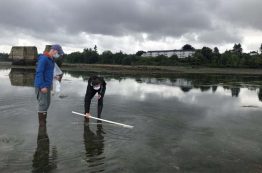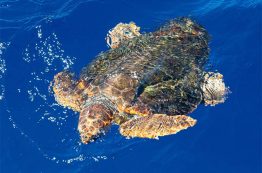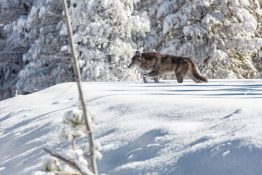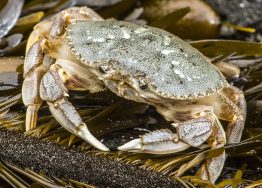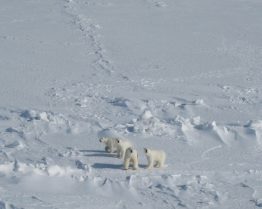European green crabs feast on shellfish, destroy marsh habitats by burrowing in the mud and obliterate valuable seagrass beds. The invasive species also reproduces quickly, making it a nightmare for wildlife managers seeking to control its spread in Washington’s marine waters. Last month, Gov. Jay Inslee issued an emergency order in response to more than 70,000 crabs caught on Lummi Nation land as well as dramatic increases in crab populations on Washington’s outer coast and other locations in Puget Sound in recent years.
Read more at UW News »Shifting ocean closures best way to protect animals from accidental catch
Accidentally trapping sharks, seabirds, marine mammals, sea turtles and other animals in fishing gear is one of the biggest barriers to making fisheries more sustainable around the world. Marine protected areas — sections of the ocean set aside to conserve biodiversity — are used, in part, to reduce the unintentional catch of such animals, among other conservation goals. Many nations are calling for protection of 30% of the world’s oceans by 2030 from some or all types of exploitation, including fishing.
Read more at UW News »Q&A: Bringing a justice lens to wildlife management
Almost all of the world’s 31 largest carnivore species, including gray wolves, grizzly bears, cheetahs and lions, have been impacted by human development and activity. Most of these animals have seen their range and populations decline over the past century, and many are listed as threatened by international conservation groups. As conservationists and scientists consider if and how to bring back these species in significant numbers across their historical ranges, many potential conflicts arise: Will the animals pose a threat to humans or livestock?
Read more at UW News »How Dungeness crabs’ complex lifecycle will be affected by climate change
New research on the Pacific Northwest portion of the Dungeness crab fishery, which spans the West Coast of the U.S. and Canada, projects how this crustacean will fare under climate change. Results show that by the end of this century, lower-oxygen water will pose the biggest threat. And while these crabs start as tiny, free-floating larvae, it’s the sharp-clawed adults that will be most vulnerable, specifically to lower-oxygen coastal waters in summer.
Read more at UW News »Sustaining polar bear populations in the face of climate warming
Polar bears capture the imagination like few other wild animals. Adorable and roly-poly as snow-white cubs, they grow into massive hunting machines, supremely adapted to the harsh landscapes of the Arctic. Iconic the world over, many of us only dream of the chance to see one outside of the zoo. Polar bears have also become a symbol of an environment that’s changing unfavorably.
Read more »
